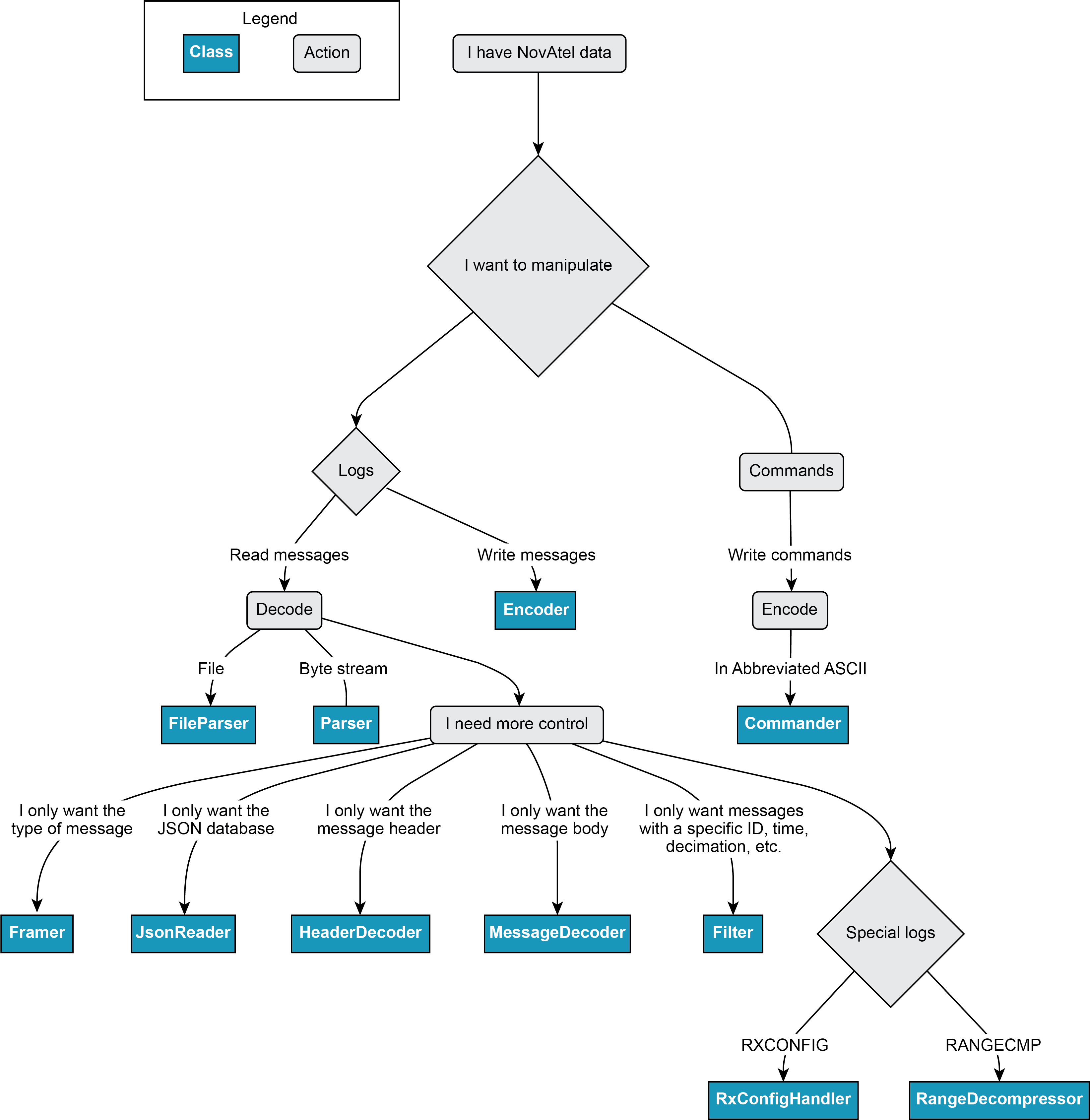Usage
EDIE provides different classes for interfacing with messages, each at a different level of the decoder stack. The main use-case of EDIE is to transform the data from one format into another. Documentation on the three NovAtel formats can be found on the OEM7 Receiver User Documentation portal at: ASCII, Abbreviated ASCII, and Binary. Flattened binary is a format unique to EDIE that standardizes the Binary format to have consistent-length arrays. So variable-length arrays are converted into fixed-size arrays. Flattened binary covers all formats (ASCII, abbreviated ASCII, and Binary).
|
User |
Task |
Purpose |
Format |
Example |
|---|---|---|---|---|
|
Person |
Human-readable |
To make the data understandable to people |
ASCII/Abbreviated ASCII |
Finding the timestamp of a BESTPOS message |
|
Programmer |
Program-accessible |
To make the data accessible from a programming language |
Flattened Binary |
Filtering a log file for BESTPOS messages |
|
Computer |
Machine-readable |
To have efficient transmission and storage of the data |
Binary |
Efficient long-term storage of logs |
Flowchart
Use the following flowchart to determine which EDIE class you need.

Notes
-
The MessageDecoder and Encoder class output and input the EDIE intermediate format and not ASCII/Binary.
-
The RXCONFIG and RANGECMP* messages are handled in different classes because of their unique traits.
-
The FileParser and Parser classes automatically filter and decode RXCONFIG and RANGECMP messages. So the RxConfigHandler and RangeDecompressor classes should only be used when bypassing the Parser class.
-
The Parser class can handle any byte stream such as a file stream, serial, Ethernet, or USB.